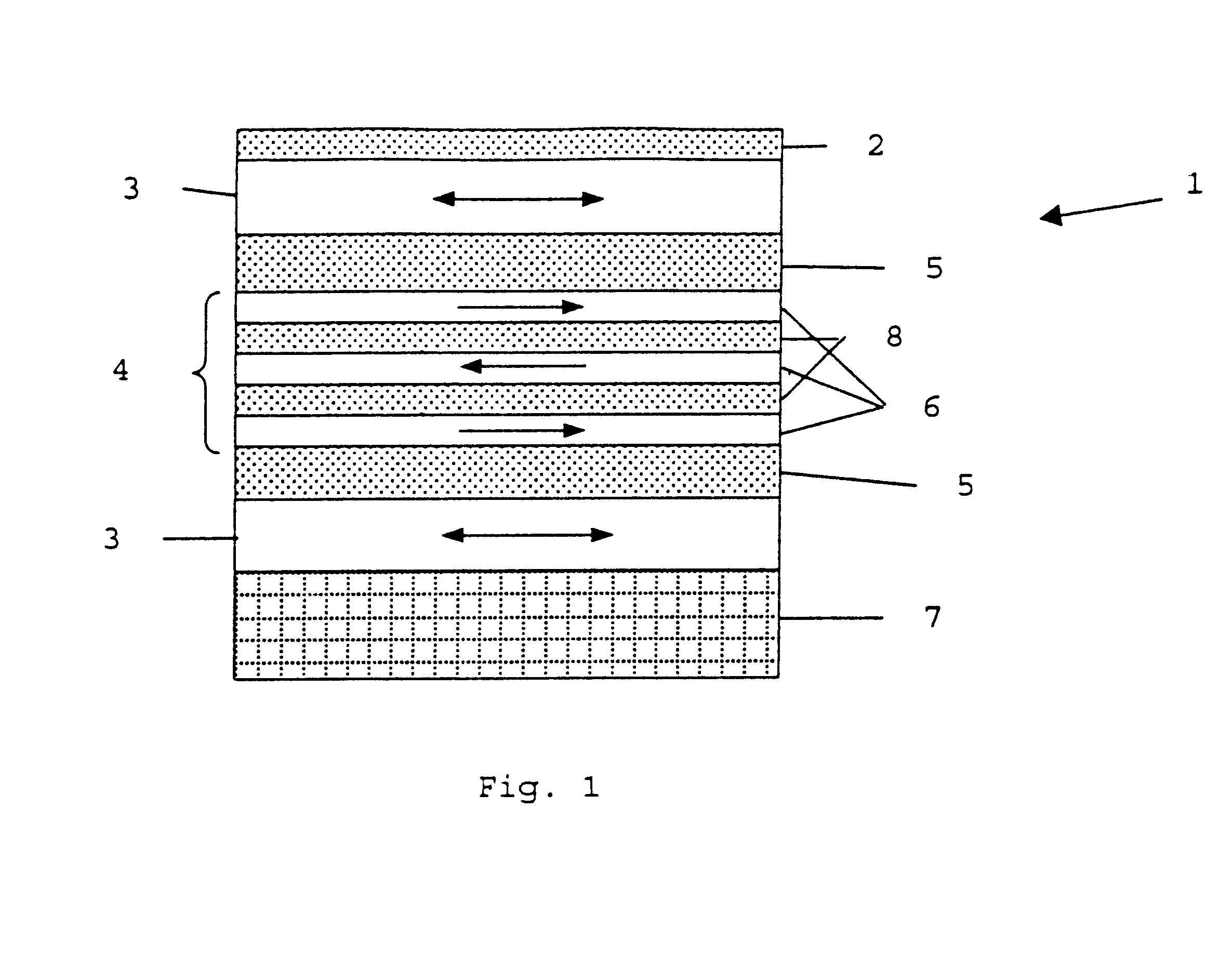Spin-valve structure and method for making spin-valve structures
a spin-valve structure and spin-valve technology, applied in the field of spin-valve structure and method for making spin-valve structures, can solve the problems of low field sensing, current shunting, signal loss,
- Summary
- Abstract
- Description
- Claims
- Application Information
AI Technical Summary
Benefits of technology
Problems solved by technology
Method used
Image
Examples
Embodiment Construction
Embodiments and examples of the invention will be described below. It is evident that the person skilled in the art will be able to imagine or make other embodiments according to the present invention, the spirit and the scope of this invention being limited only by the appended claims.
The aims of the invention are met in the present invention. A spin-valve deposited on a semiconductor substrate or any other substrate with an insulating layer between the substrate and the spin-valve results in a highly sensitive magnetic sensor. The production of a magnetic sensor can comprise the electroplating of a spin-valve structure on a substrate and can provide a sensor capable of high magnetoresistive signals and high sensitivity for low fields.
The process according to the invention thus can comprise an electrodeposition step. Electrodeposition usually takes place on a conductive seed layer, typically Cu. If this seed layer cannot be removed, problems of current shunting and signal loss occu...
PUM
| Property | Measurement | Unit |
|---|---|---|
| thickness | aaaaa | aaaaa |
| electrical | aaaaa | aaaaa |
| electrical transport | aaaaa | aaaaa |
Abstract
Description
Claims
Application Information
 Login to View More
Login to View More - R&D
- Intellectual Property
- Life Sciences
- Materials
- Tech Scout
- Unparalleled Data Quality
- Higher Quality Content
- 60% Fewer Hallucinations
Browse by: Latest US Patents, China's latest patents, Technical Efficacy Thesaurus, Application Domain, Technology Topic, Popular Technical Reports.
© 2025 PatSnap. All rights reserved.Legal|Privacy policy|Modern Slavery Act Transparency Statement|Sitemap|About US| Contact US: help@patsnap.com



